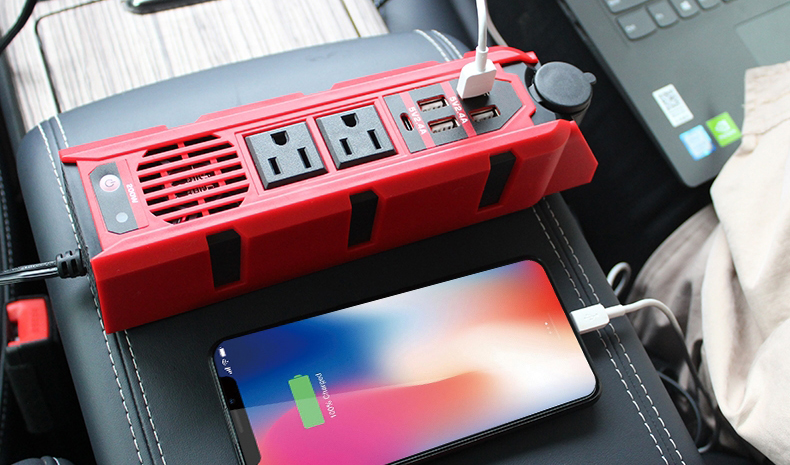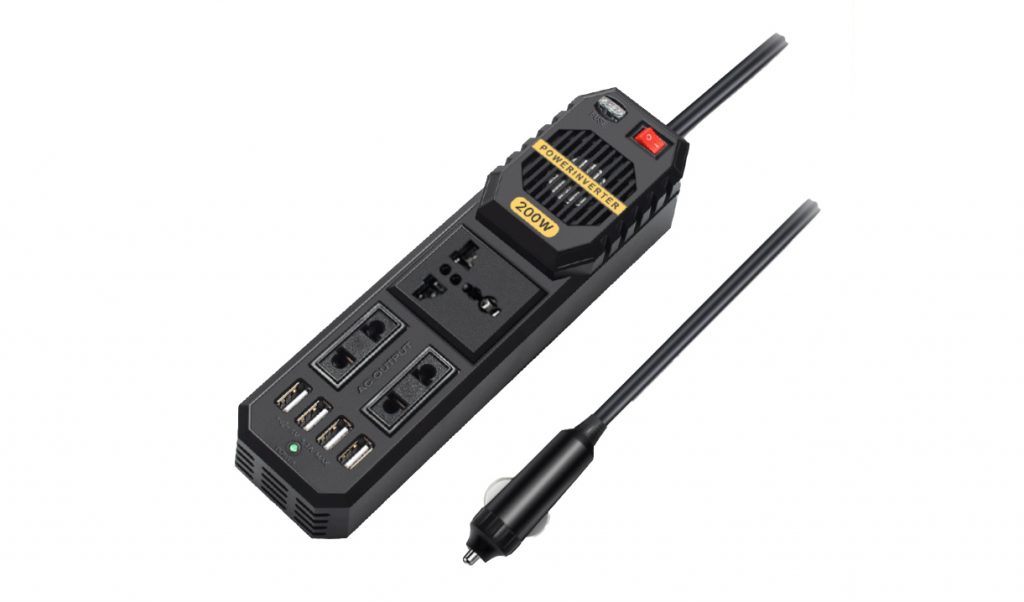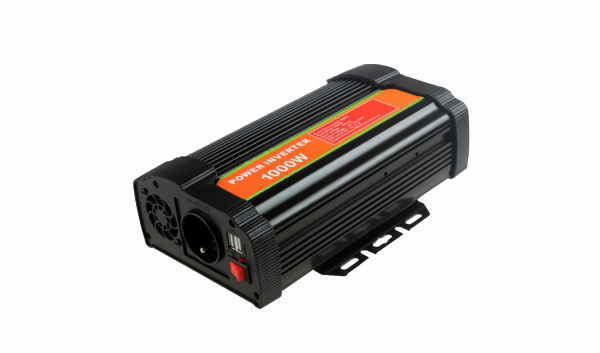If you need power at home when there is a power failure or on a car or boat that is far from the power grid, then a car power inverter will be what you need. A car power inverter is a converter which converts the DC current provided by the battery to the AC current with rated or adjustable voltage. The power grid supplies industry and homes with alternating current, and almost all household appliances and equipment rely on alternating current to run. Direct current devices such as lead acid batteries store only direct current. Car Power inverters can increase the voltage of the direct current and change it to alternating current to power the equipment.
Functionally, the reason why we need a car power inverter is different from the reason why we need a car battery charger. The function of car battery chargers is to charge and maintain the battery, while the function of car power inverters is to use the power provided by the battery and expand the range of the electrical appliances that use the car battery.
In a home environment, a power inverter can convert the direct current stored in a battery into standard alternating current, which can be used to power a variety of 110V or 220V electrical appliances at home. Almost all household appliances, from lamps to computers, from televisions to even kitchen appliances, can use the power supply provided by a power inverter. So, you can take a power inverter as a mobile version of a wall outlet in your home. In a car, we know that a cigarette lighter port can be connected to a USB adapter to charge phones, navigation devices or other electronics. But a USB adapter won’t be able to power those home appliances with large plugs, while a power inverter may have this realized.

Structure of a Car Power Inverter
The common design of a car power inverter is a rectangular box, with some types are designed to be the shape of a power outlet. A power inverter usually contains a single 12V or 24V battery. Some devices reach 12V or 24V by connecting multiple batteries in parallel. The AC output voltage of car power inverters is usually 110V or 220V.
A car inverter needs to be charged before use. The charging of a car power inverter can be done from conventional household power source, a gas generator, a car engine or even solar panels.
Types of Car Power Inverters
The commonly used car power inverters care mainly divided into two types. They are true sine wave power inverters (or pure sine wave power inverters) and modified sine wave power inverters (or square wave power inverters).
A true sine wave power inverters are highly efficient and can meet the quality of the standard power grid, so they are suitable for common electrical appliances and high energy consumption electrical appliances such as computers, air conditioners, microwave ovens, heaters, etc. They provide electricity that is most similar to a standard power grid and are therefore compatible with almost all household appliances and electronics.
Modified sine wave power inverters are relatively less efficient than true sine wave power inverters. They are suitable for providing power supply to household appliances and electronics that consume less power. But they have the advantage of being cheaper than those true sine wave power inverters.
Voltage and Power Rate of a Power Inverter
The input voltage of a car power inverter is usually 12V or 24V, while the output AC voltage is commonly 110V or 220V. Therefore, when choosing a power inverter for a car, it is necessary to get to know the battery voltage of the car firstly. The power rate of a power inverter refers to the total power that it can simultaneously or continuously supply for the electrical equipment. Their power rate range is usually from 100W to 5000W.

3 Criteria for a Power Inverter
Surge rating, continuous rating, and 30-minute rating are the technical parameters to be considered when selecting a power inverter. These three technical parameters can also be applied as the criteria for choosing power inverter products.
1. Surge Rating
Some electrical appliances, such as refrigerators and televisions, require more power for a short period of time when they start to work than when they normally work. Therefore, a power inverter must generally be able to maintain its surge rating for at least 5 seconds.
2. Continuous Rating
The continuous rating represents the power rate of a power inverter that can be expected to be used without causing the equipment to overheat or potentially shut down automatically due to overheating.
3. 30-Minute Rating
The 30-minute rating is set to meet the needs of certain electrical appliances that use far less power than high power consumption appliances. It is sufficient to meet the needs of low power consumption appliances for short periods of use.

Common Protection Measures in Car Power Inverters
Similar with these protection measures adopted in car battery chargers, car power inverters are also equipped with some protection measures to ensure the stable use under extreme conditions. These protection measures include under voltage protection, over voltage protection, overload protection, over temperature protection and short-circuit protection.
